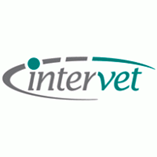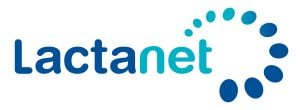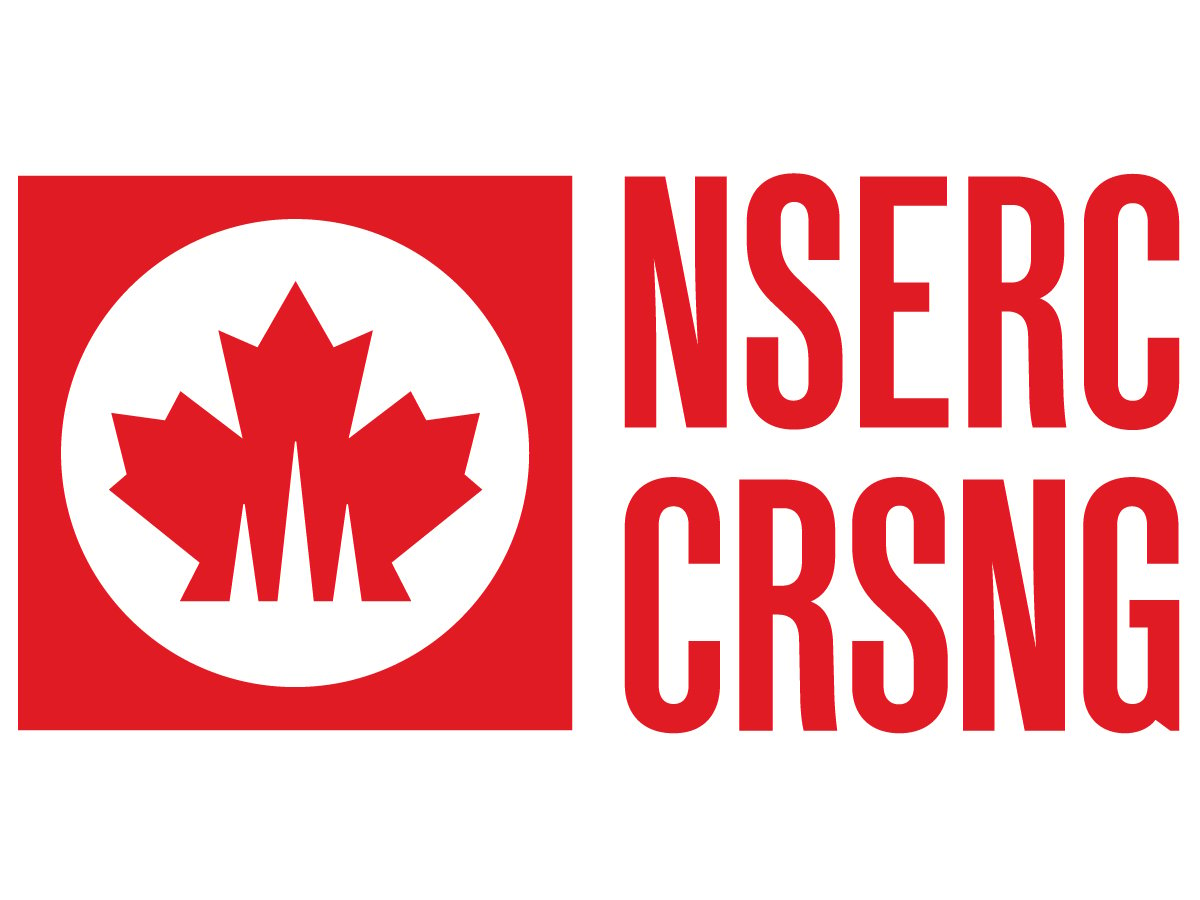
Project Overview
University of British Columbia’s Animal Welfare Program was created as an NSERC Industrial Research Chair (IRC) in 1997 and has since grown to become the world’s leading research group working on dairy welfare. The NSERC IRC in Dairy Cattle Welfare builds upon these strong foundations to produce science-based recommendations that allow dairy producers to promote the health, welfare and productivity of their cattle. This funding helps maintain our ability to serve as the world’s leading research unit working in this area and strengthens the position of the Canadian dairy industry in addressing the increasingly important issues around social sustainability of farm practices.
The 2019-2024 research program has four main pillars related to welfare concerns of practical interest to the dairy industry, including:
- Calf and heifer rearing;
- Cow health and lameness;
- Housing facilities and management; and
- Painful procedures.
What Did the Research Team Do?
Under each of these pillars, a number of different studies have been conducted, each with their own objectives. Example projects included:
- Investigating the social behaviour of calves, their motivation to spend time with another calf and the impact of social housing strategies.
- Evaluating strategies for improved detection of lameness on farms, including the use of automated technologies.
- Investigating cow behaviour that can be used for the early detection of disease in cattle, including transition cow disease.
- Exploring the impact of different approaches to offering outdoor access to dairy cattle.
- Developing low-stress handling methods to offer positive reinforcement for training heifers in response to restraint and farm procedures.
- Developing new pain assessment methods to allow for stronger conclusions about best practices for disbudding and dehorning, and castration.
What Did the Research Team Find?
This research program had a lot of findings! See the outputs below for more information. Example results include:
- Calves are highly motivated to gain access to social contact with another calf, and pair/group-housed calves respond better to stress than individually housed calves.
- Lameness is more accurately and consistently detected with multiple assessments of the same animal; automated methods of assessment using on-farm technologies offer significant opportunity for efficiency and reliability for farmers.
- Standing time and behaviour during the dry period is associated with lameness; lameness at dry-off is also associated with increased odds of metritis and transition disease.
- Access to pasture is associated with a number of benefits, from achieving optimal lying times, to more locomotor activity, expression of estrus, and reduced negative social interactions; cows’ preferences for usage of an outdoor bedded pack is influenced by space allowance and other qualities of the environment, such as level of comfort of the lying surface.
- Heifers exposed to positive reinforcement during restraint and performing on-farm procedures appear to be less stressed than control heifers not offered this reinforcement.
- New innovative methods that focus on calf behaviour are providing insight into how calves perceive pain associated with disbudding and castration.
Principal Investigators
Marina Von Keyserlingk
University of British Columbia
Dan Weary
University of British Columbia
Key Words
- Animal welfare, dairy cattle, behaviour, health, lameness, pain, calves, management
Period: 2019-2024
Budget: $1,472,180
Last Updated: December 04, 2023
Note: As per the research agreement, aside from providing financial support, the funders have no decision-making role in the conduct of the studies, data collection, and analysis or interpretation of the data. Researchers are independent in conducting their studies, own their data, and report the outcomes regardless of the results. The decision to publish the results rests entirely with the researchers.
PROJECT COMMUNICATION OUTPUTS
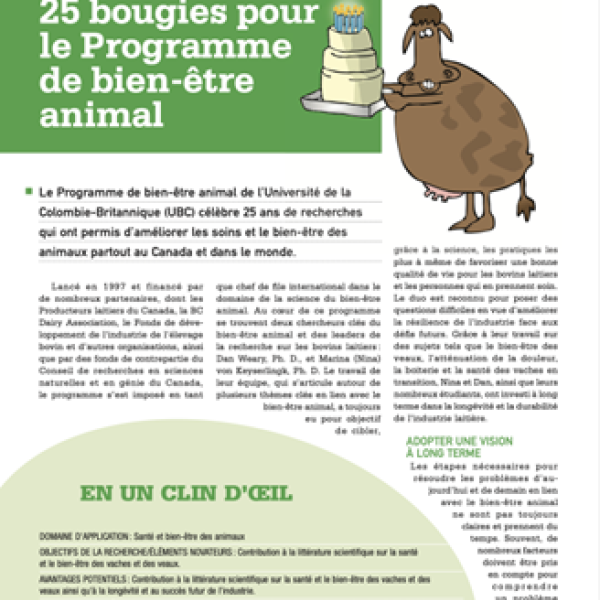
TRADE PUBLICATION
DOWNLOAD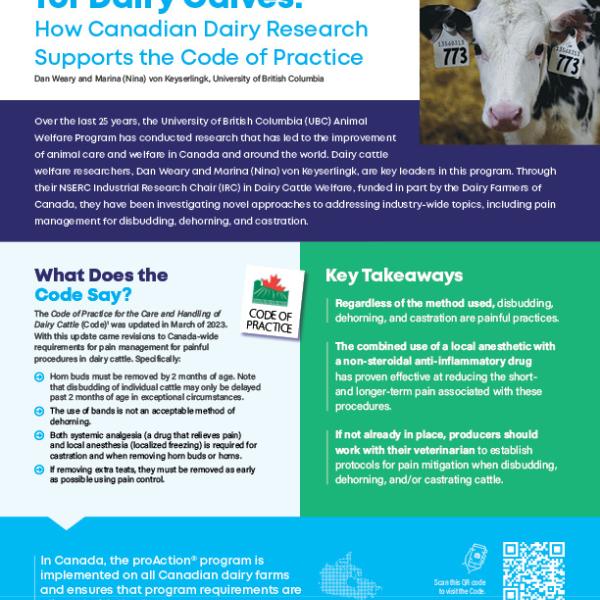
TECHNICAL SHEET
DOWNLOAD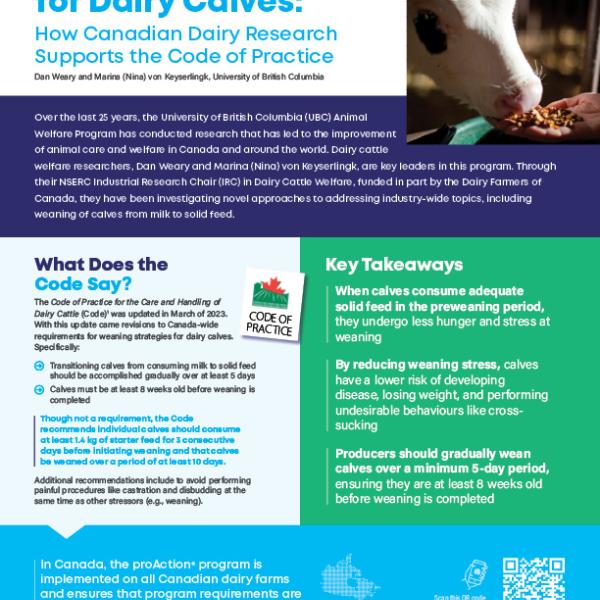
TECHNICAL SHEET
DOWNLOAD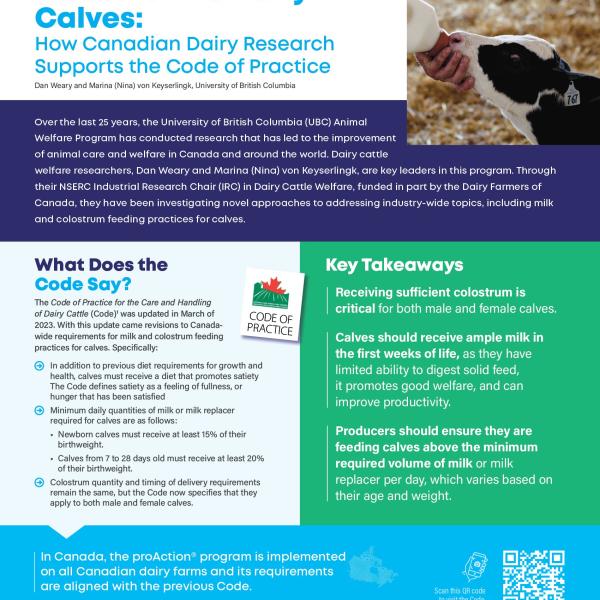
TECHNICAL SHEET
DOWNLOAD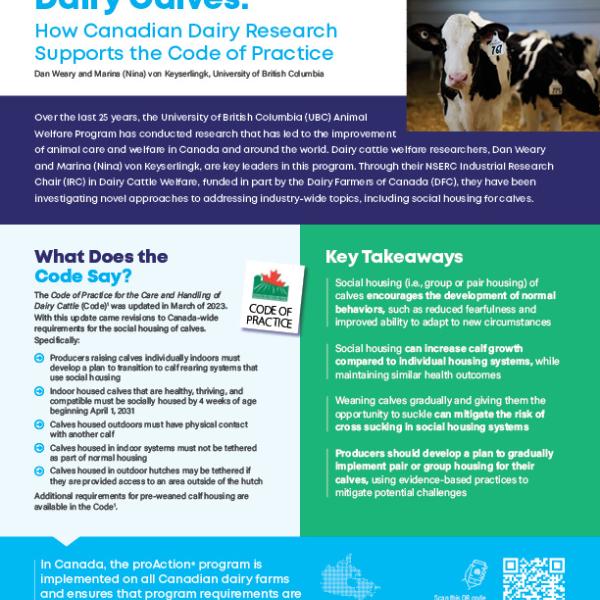
TECHNICAL SHEET
DOWNLOAD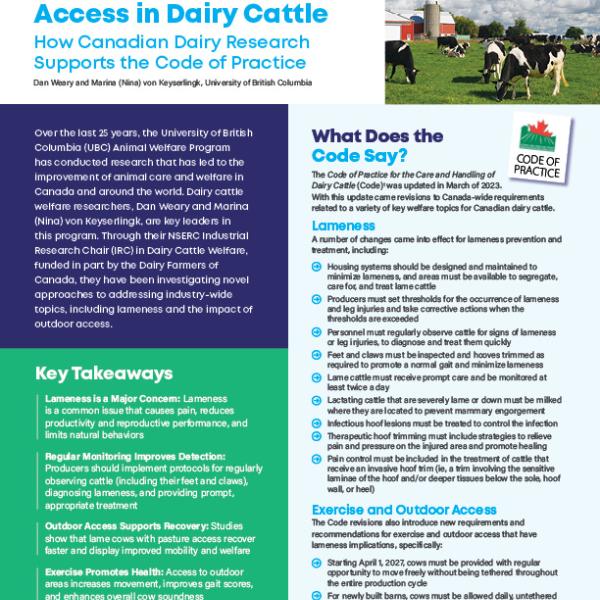
TECHNICAL SHEET
DOWNLOAD
PODCAST
LISTEN
PODCAST
LISTEN
PODCAST
LISTEN
PODCAST
LISTEN
PODCAST
LISTEN
PODCAST
LISTEN
PODCAST
LISTEN
WEBINAR
WATCHPROJECT PUBLICATIONS
Please refer to the Principal Investigators’ Google Scholar profiles:
-
Marina Von Keyserlingk: https://scholar.google.com/citations?hl=en&user=UATEwywAAAAJ
-
Dan Weary: https://scholar.google.com/citations?hl=en&user=QEKqGDEAAAAJ





